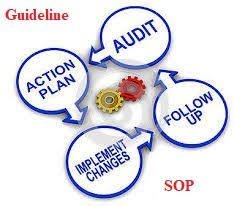What you should Inspect when Conducting Self-inspection in Pharmaceuticals

✅ Areas to Inspect During Self-Inspection in Pharmaceuticals
-
Personnel & Training
-
Verify staff qualifications, training records, and adherence to GMP practices.
-
-
Premises & Facilities
-
Check cleanliness, maintenance, pest control, HVAC systems, and environmental monitoring.
-
-
Equipment & Instruments
-
Ensure calibration, preventive maintenance, cleaning validation, and logbook entries are up to date.
-
-
Documentation & Records
-
Review SOPs, batch manufacturing records, logbooks, and compliance with ALCOA+ principles for data integrity.
-
-
Raw Materials & Packaging Materials
-
Inspect receipt, storage, sampling, dispensing, and labeling practices.
-
-
Production Process
-
Verify adherence to approved batch records, in-process checks, line clearance, and yield reconciliation.
-
-
Quality Control (QC) Laboratory
-
Check testing procedures, data integrity, instrument qualification, and OOS/OOT handling.
-
-
Warehousing & Distribution
-
Ensure proper segregation of materials, controlled storage conditions, and GDP compliance.
-
-
Deviation, Change Control & CAPA
-
Evaluate effectiveness of deviation handling, change control system, and CAPA implementation.
-
-
Validation & Qualification
-
Inspect equipment qualification, process validation, cleaning validation, and computerized system validation.
-
Water & Utilities System
-
Check purified water, WFI, compressed air, and gas systems for compliance and monitoring.
-
Safety & Hygiene
-
Verify personnel hygiene, gowning practices, waste management, and occupational safety measures.
-
Contract Manufacturing & Suppliers
-
Assess supplier qualification, vendor audits, and contract manufacturer oversight.
-
Product Complaints & Recalls
-
Review complaint handling, recall procedures, and investigation effectiveness.
-
Pharmacovigilance (if applicable)
-
Inspect adverse drug reaction reporting and regulatory compliance.
🎓 Discover one of the best Complete Pharmaceutical Quality Assurance Course available —click below to explore the course that’s shaping future in QA Course skills.

